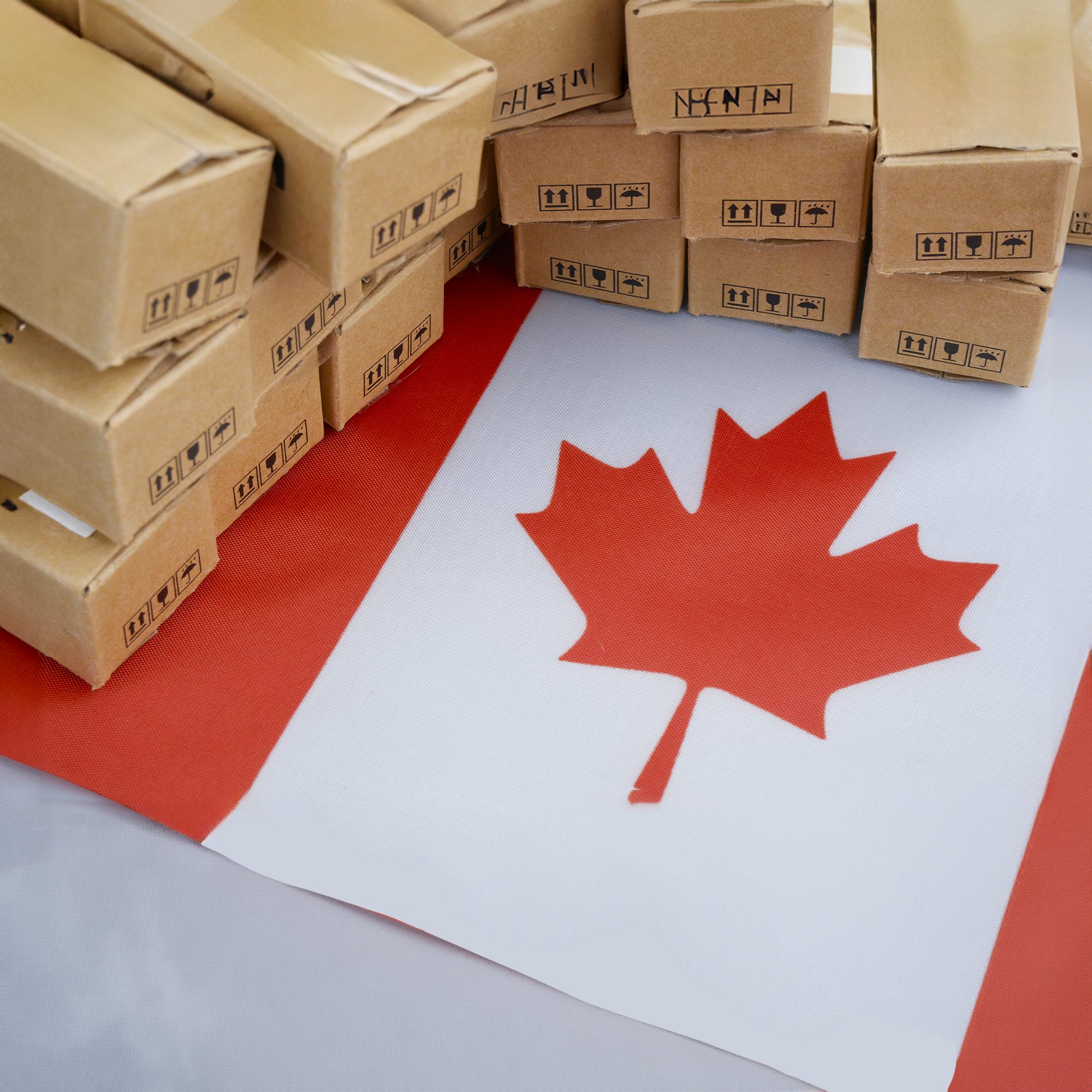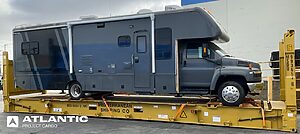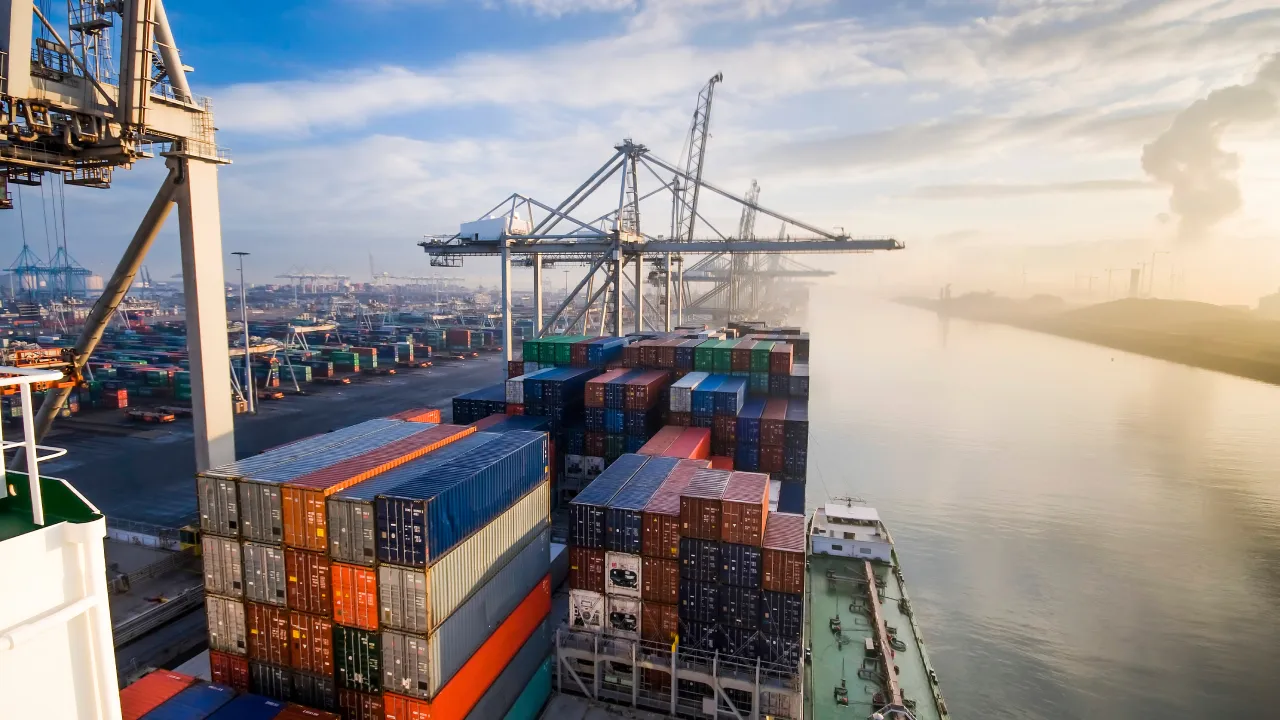
Introduction
Import can be a complex process involving numerous regulations and requirements. Especially, when we are talking about the import of commercial goods to Canada. To make the process smooth and cost-effective, you need to have a good understanding of import processes.
In this guide, we will give you the information required to start importing commercial goods into Canada. We will talk about preparation, classification and valuation, documentation, customs clearance, and so on.
Customs Clearance Guide

Download your copy today and: • Navigate customs with confidence • Save time and money • Stay compliant
Stop the guesswork, start streamlining your imports and exports. Download your free guide now!
Download nowPreparation Before Import
Before starting, you should have a clear understanding of the steps to begin.
Business Number (BN) and Import-Export Program Account (IEA).
To operate a business in Canada, you’ll need a Business Number (BN). This identification number is used for tax purposes. You can get it by mail or online.
Additionally, you would need an import-export program account from the Canada Border Services Agency (CBSA). You can read more about it here.
If you don’t want to spend your time on this, you can use the custom brokerage services from Atlantic Project Cargo.
Niche, Competition and Demand
Understanding market demand and competition is essential for a successful import business. Identify your target market, analyze product demand, and assess the competitive landscape. Understanding consumer preferences and trends will help you position your products effectively.
Suppliers
In order to have a successful business, you need reliable suppliers. You should do your own research, and compare different suppliers. Also, have a look at price, quality, and terms. We suggest carefully studying such factors as minimum order quantities, shipping, and payment terms.
Understanding Canadian Regulations and Restrictions
Canadian import and export regulations, as regulations in other countries can be confusing at the beginning. Pay careful attention to customs laws, duties, taxes, tariffs, quotas, and restrictions. If you do not comply it can lead to negative consequences such as penalties or disruptions. Atlantic Project Cargo will guide you through all the import processes, assist with laws and tariffs, and consult you on product restrictions.
Classification of Goods in Canada
Let’s have a look at each category and we will explain the difference.
Eligible Goods
Those that comply with Canada’s import guidelines and regulations. These products can typically enter the country without significant restrictions, provided they meet all customs formalities. As an example, we can mention industrial machinery, manufacturing equipment, construction equipment, agricultural machinery, and so on.
Prohibited Goods
These goods are prohibited from entering Canada by law. This category encompasses illegal substances, counterfeit products, specific firearms, and hazardous materials.
Restricted Goods
These products are subject to specific limitations or requirements for import into the country. Examples include agricultural products, endangered species, and cultural artifacts. Importing these items often necessitates permits, licenses, or compliance with particular regulations.
Controlled Goods
These are items subject to strict government oversight due to potential risks to national security, public safety, or other critical interests. These goods often include military equipment, dual-use technologies (with both civilian and military applications), and other items with security implications.
Classification and Valuation
Harmonized Tariff System (HTS) Codes
The Harmonized Tariff System (HTS) is utilized to classify traded goods. Each product is assigned a unique HTS code. Based on the code you can see the duties, quotas, and restrictions. Misclassification of goods can result in customs delays, financial penalties, and unforeseen fees.
Finding the correct HTS code for your product can be complex. It’s essential to provide detailed product descriptions to customs authorities. Consider consulting with Atlantic Project Cargo to ensure accurate classification.
Calculating Customs Value for Import Duties

Canada’s import duties and taxes are determined based on the declared value of the goods, which is typically derived from the transaction value — the price paid or payable for the goods. However, other valuation methods may be applied in certain situations. It is crucial to provide accurate and comprehensive information regarding the transaction value to avoid disputes over valuation and potential penalties.
Free Trade Agreements
Canada benefits from several trade agreements with other nations. These agreements often provide for reduced or eliminated tariffs on certain goods. Identifying eligible products and complying with the rules of origin can help you take advantage of these benefits.
Here are some of the most important FTAs:
- Canada-United States-Mexico Agreement (CUSMA)
This is the successor to NAFTA and remains a cornerstone of Canadian trade - Comprehensive and Progressive Agreement for Trans-Pacific Partnership (CPTPP)
A significant agreement covering 11 Pacific Rim countries - Canada-European Union Comprehensive Economic and Trade Agreement (CETA)
This agreement has deepened economic ties with the EU - Canada-Chile Free Trade Agreement
- Canada-Israel Free Trade Agreement (CIFTA)
Import Documentation
The following documents are required for importing commercial goods into the country.
Commercial Invoice
A commercial invoice is a comprehensive document that details the transaction between a buyer and a seller. It provides essential information about the goods, including descriptions, quantities, prices, payment terms, and shipping details. This invoice is crucial for determining the customs value and calculating the applicable duties.
Packing List
This document shows the type of content in each package. The common packing list information includes:
- Number of packages
- Types of packages
- Products description
- Product quantity
- Product weight
The customs officials can easily identify what is in the package by using this document.
Bill of Lading or Air Waybill
Basically, these two documents are the same. The main difference is that the Bill of Bading is used for ocean cargo, and the Air Waybill for air cargo. In simple words, this is an agreement between the shipper and carrier. Another purpose of this document is to be a receipt and prove the ownership, or act as a carriage contract.
Certificate of Origin
This document shows where the product was manufactured. Having this document is crucial if you are importing under a free trade agreement.
Other Required Documents
Additional documents might be needed for specific goods. These can include:
- Import permits or licenses
- Health certificates
- Product safety certifications
- Other regulatory documents
For example, Dangerous Goods Declarations – if you’re importing hazardous materials, you must provide specific documentation outlining the nature of the goods and safety precautions. Also, Export Licenses (from the exporting country) – some countries require export licenses for certain goods, which you’ll need to provide to Canadian customs.
Customs Clearance and Duties
 Once your goods arrive, the next step is to clear them through customs and pay any applicable Canadian duties and taxes.
Once your goods arrive, the next step is to clear them through customs and pay any applicable Canadian duties and taxes.
Choosing a Customs Broker
The customs clearance process can be complicated and stressful. A customs broker is a licensed professional who can handle the customs clearance process on your behalf. They have a deep understanding of customs compliance.
Atlantic Project Cargo provides a full suite of customs brokerage services and can handle the customs clearance process from the beginning to the end.
Customs Clearance Process
This process typically involves submitting required documentation, settling import duties and taxes, and potentially undergoing inspections. The exact method depends on the goods and their worth.
Import Duties and Taxes
The amount of import duties and taxes levied on your goods is determined by their value, classification, and country of origin. These fees must be paid in full before customs authorities release your shipment. Our convenient Canada import duty calculator can help you estimate these costs accurately.
Our Canada import duty calculator will help you assess and understand the amount of Canada import duties and taxes.
Shipping and Logistics
Efficiently transporting your goods from the supplier to your Canadian destination is crucial for timely delivery and cost-effectiveness.
Transportation Options
The optimal shipping method depends on several factors including product type, delivery timeline, and cost. We can mention:
Incoterms
Incoterms, or International Commercial Terms, outline the responsibilities of buyers and sellers in international trade. They clarify who is responsible for transportation, insurance, customs clearance, and other aspects of the transaction. You can read about them in our article “Shipping Incoterms: A Comprehensive Guide to How They Are Used”.
Insurance
Shipping insurance safeguards your goods against loss or damage during transportation. The level of coverage depends on the value of your shipment and the inherent risks involved.
Consider the following types of insurance:
- All risks – covers loss or damage from any cause except willful misconduct
- Specific perils – covers loss or damage caused by specific perils, such as fire, theft, or marine perils
Warehousing and Distribution
Efficient warehousing and distribution are crucial for managing inventory and fulfilling customer orders. Several options are available:
- Public warehousing
Renting space in a shared warehouse - Private warehousing
Owning or leasing your warehouse - Third-party logistics (3PL) providers
Outsourcing warehousing and distribution functions
When choosing a warehousing and distribution solution, consider factors such as inventory levels, order fulfillment requirements, and budget constraints.
Compliance and Risk Management
Building strong customer relationships extends beyond the initial sale. Effective after-sales service and customer support are crucial for customer satisfaction, loyalty, and business growth.
- Customer Support Channels – providing multiple channels for customers to reach your support team is essential
- Warranty and Returns – a well-defined warranty policy builds trust and protects your business
- Customer Feedback – valuing customer feedback is essential for improvement
- Building Customer Loyalty – Rewarding loyal customers can deepen relationships and encourage repeat business
Additional Considerations
Beyond the core import process, several factors can significantly impact your business.
Import Controls and Restrictions
Import to Canada has specific regulations on goods. Understand prohibited and restricted items to prevent legal troubles. Some common restrictions include:
- Intellectual property infringement – importing counterfeit or pirated goods
- Health and safety regulations – restrictions on certain products for consumer protection
- Environmental regulations – restrictions on hazardous materials
Free Trade Zones
Free Trade Zones (FTZs) offer specific benefits for importers, including:
- Duty-free imports – temporary exemption from import duties
- Reduced customs procedures – simplified customs clearance
- Opportunities for manufacturing and distribution – using FTZs as a base for operations
Conclusion
Importing commercial goods into Canada can be a complex task because of numerous regulations and requirements. Navigating this process effectively requires a thorough understanding of customs procedures, documentation, and compliance.
From preparing to import and understanding Canadian regulations to handling customs clearance and logistics, each step is crucial for building a successful import business. Atlantic Project Cargo offers comprehensive support throughout the entire import journey, providing expertise in customs brokerage, import documentation, and compliance. Contact us today for your free quote!
Read More



